Quick Links
Servo Stabilizer - Your Trusted Voltage Guardian
Servo Stabilizer is machine which stabilizes the output voltage to the load irrespective of variation in the input voltage.
It is of two types:
1) Air Cooled Servo Stabilizer
2) Oil Cooled Servo Stabilizer
The main components are
Buck Boost Transformer
Auto Transformer
Control Circuit
Servo Motor
The control circuit detects the input voltage and provides the signal to the servo motor which is interlocked with the autotransformer.
Depending upon the input voltage, whether it is a voltage drop or voltage rise the control signal drives the motor reverse or forward respectively.
Thus the Drop or rise in voltage adjusted with the help of autotransformer.
The voltage from the autotransformer is added with that of fixed voltage arising from the buck boost transformer and together the voltage is provided to the load.
The Servo Stabilizer generally has a LCD display in the front panel which displays the input and Output Voltage, load current, Frequency, Phase to Phase Voltage.
The servo stabilizer is equipped with a protection circuit which trips the output voltage in case of any failure in the correction circuit/input or output voltage is beyond permissible limit/overload/input phase failure.
It is highly reliable and it is widely used for industrial and residential applications.
For orders kindly click here.
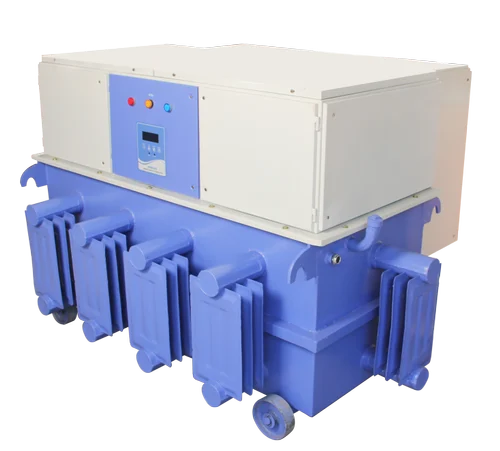
Online UPS - 24/7 Critical Power Backup
An Online UPS is a device which provides backup power when there is a power shortage. It may seem to be similar to an inverter but practically it is more complicated system designed to switch to battery power when there is a power failure.
It uses a double conversion technology where the Input AC power is rectified to DC then DC is again converted to AC. The system is connected to a power bank which is usually a sealed maintenance battery or lead acid battery. The switching time from raw power to battery mode is usually maintained within 10 micro seconds.
Depending upon the load and required battery backup the Online UPS can be customized. The Capacity of the UPS is generally represented by KVA and battery VDC depends upon the capacity and backup that is required.
Online UPS is of two types:
- Low Frequency Online UPS
- High Frequency Online UPS
List of Famous Online UPS Brands in India are listed below:
- Eaton
- APC
- BPE
- Socomec
- Fuji Electric
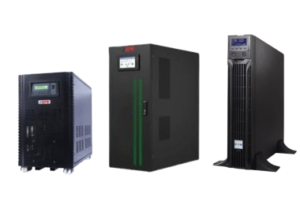
Industrial Transformers - For Imported Machineries
Transformers are essential components in electrical engineering, used to change the voltage levels in power systems. In industrial settings, three main types of transformers are commonly utilized: step-up transformers, step-down transformers, and isolation transformers. Each type serves a distinct purpose and has unique applications. In this blog, we’ll explore these three types of transformers, their functions, and their importance in industrial operations.
Step Up Transformer:
A step-up transformer increases the voltage from the primary winding (input) to the secondary winding (output). This is achieved by having more turns of wire in the secondary winding than in the primary winding.
Step Down Transformer:
Conversely, a step-down transformer decreases the voltage from the primary to the secondary winding. This is done by having fewer turns of wire in the secondary winding compared to the primary.
Isolation Transformer:
An isolation transformer is designed to isolate the secondary circuit from the primary circuit. It typically has equal turns on both the primary and secondary windings, allowing it to transfer electrical power while providing electrical isolation.
Applications
Sensitive Equipment: Isolation transformers are essential in protecting sensitive electronic equipment, such as computers and medical devices, from voltage spikes and electrical noise.
Grounding and Safety: They are used to enhance safety in industrial settings by preventing ground loops and ensuring that the secondary circuit is not directly connected to the primary power source.
Benefits
Noise Reduction: Isolation transformers help in minimizing electrical noise, providing cleaner power to sensitive equipment.
Enhanced Safety: They offer protection against electric shock and faults, making them invaluable in industrial environments.
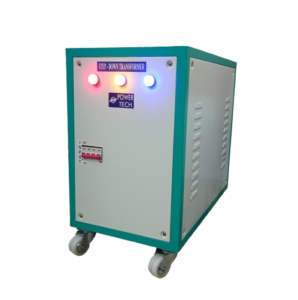
Solar Inverter - The Best Investment for Your Future
Wondering on how to reduce your electricity bills?
The best solution is switching to Solar Power System. Solar Power System may seem to be huge investment but the ROI is between 5-7 years only and the system’s lifespan is expected to last up to 30 years which seems to be a huge savings investment.
Solar Power System is of three types:
On-Grid Solar Power Plant
Off-Grid Solar Power Plant
Hybrid Solar Power Plant
On Grid Solar Inverter System is a combination of Solar Panels, On Grid Solar Inverter and the protection devices. The DC power generated from the solar panels is directly converted to AC power and fed back to the grid itself. The On grid solar inverter is connected to bidirectional EB meter which records the power consumed from the grid by the utility and also the power fed back to the grid. Thus the consumer (residential ) will pay only for the difference in the units consumed.
Off Grid Solar Inverter System is a combination of Solar Panels, Off Grid Solar Inverter, Battery Pack and the protection devices. This system is helps the consumers in providing them power backup in case of grid power failure. This system is independent of grid and it works even when it is not connected to the power source. The inverter is designed in such a way that it utilizes maximum power generated from the solar panels and the additional required power is consumed from the EB. Incase of Power shortage the maximum power is consumed from the solar panels and additional power is consumed from the battery. Generally an Off-Grid Solar Inverter produces 3 units of power during summer.
Hybrid Solar Inverter System is a combination of On-Grid and Off- Grid Solar inverter.
For orders kindly click here.
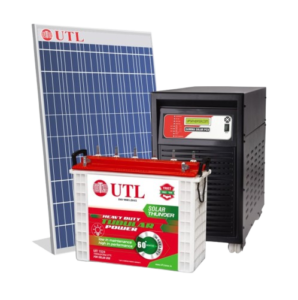
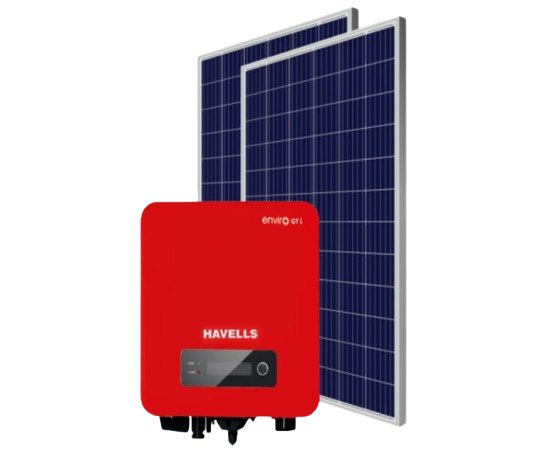
Best Inverters for Home
When it comes to inverters for residential purpose the best way to select is based on the lights, fans and the important appliances that you would like to use in case of power failure.
The capacity of the inverter is often mentioned in VA (volt ampere) or KVA (kilo volt ampere) while the capacity of the battery is mentioned in Ah (ampere hour).
When you need to run more no of lights, fans then you need to increase the capacity of the inverter while when you need to run the same lights and fans for long hours you need to increase the capacity of the battery.
Normally a 1050VA inverter and a 150Ah lead acid tubular battery is more than sufficient for a double bedroom house.
It will support a maximum of 5 lights and 5 fans at once above that it will trip indicating overload.
The more power you consume from the battery during the power failure the less backup you get.
A minor maintenance is required for the battery where distilled water has to be filled in the removable lids for every 3-4 months in case of short tubular battery and 6 months for tall tubular battery.
This is due to vaporization of acid during the chemical reaction that happens while battery charging and discharging.
The acid that evaporates from the lids may corrode the terminals and lugs. In order to prevent the same petroleum jelly has to be applied over it.
For direct orders kindly click here.
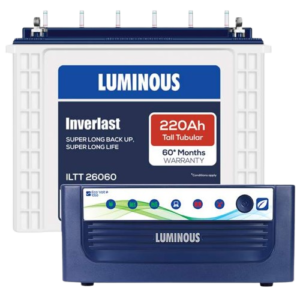
Constant Voltage Transformer (CVT)
A Constant Voltage Transformer (CVT) is a type of transformer designed to provide a stable output voltage regardless of fluctuations in the input voltage. It is commonly used in applications where a consistent and regulated voltage is critical, even if the incoming power supply is unstable or varies. CVTs are often employed in industrial, commercial, and sensitive electronic equipment environments.
Key Features of Constant Voltage Transformers:
Voltage Regulation:
The primary function of a CVT is to regulate the output voltage, ensuring that it remains constant despite variations in the input voltage. This is particularly useful in areas where the supply voltage fluctuates or is prone to spikes and dips.
Steady Output:
The CVT ensures that the connected equipment receives a reliable and steady output voltage, which prevents damage from power surges or drops and enhances the performance and lifespan of electrical devices.
Electromagnetic Induction:
Like traditional transformers, CVTs use electromagnetic induction to step up or step down the voltage. However, in addition to the basic function of voltage conversion, CVTs are specially designed to provide voltage stabilization.
Application in Sensitive Equipment:
CVTs are commonly used to protect sensitive electronics, such as computer systems, medical equipment, industrial machinery, and communication devices, from the potential harm caused by unstable voltage.
Power Factor Correction:
Some CVTs include features like power factor correction (PFC) to improve the efficiency of power usage, further ensuring stable and high-quality power delivery.
How It Works:
A CVT typically uses a combination of a series inductor and a voltage regulation circuit. When the input voltage fluctuates, the series inductor reacts to smooth out those variations by limiting the impact of these fluctuations on the output. The voltage regulation circuit then adjusts to maintain the constant output voltage.
In some designs, a magnetic amplifier or tap-changing mechanism is used to adjust the output voltage precisely, further enhancing its ability to keep the voltage stable even under changing load conditions.
Common Uses:
Industrial settings where equipment requires a constant supply voltage to function properly.
Medical equipment to protect sensitive devices from voltage variations that might disrupt their operation.
Data centers and telecommunication systems, where stable power is crucial for reliable performance.
Overall, a Constant Voltage Transformer plays a critical role in applications where voltage stability is paramount for the safety, efficiency, and longevity of electrical systems and equipment.
